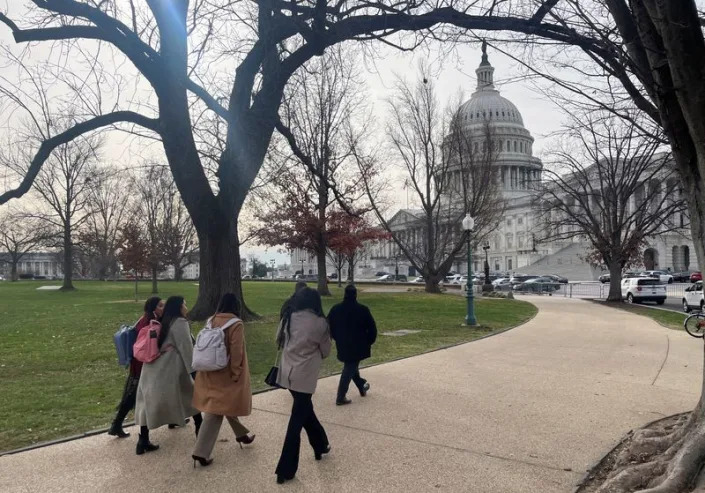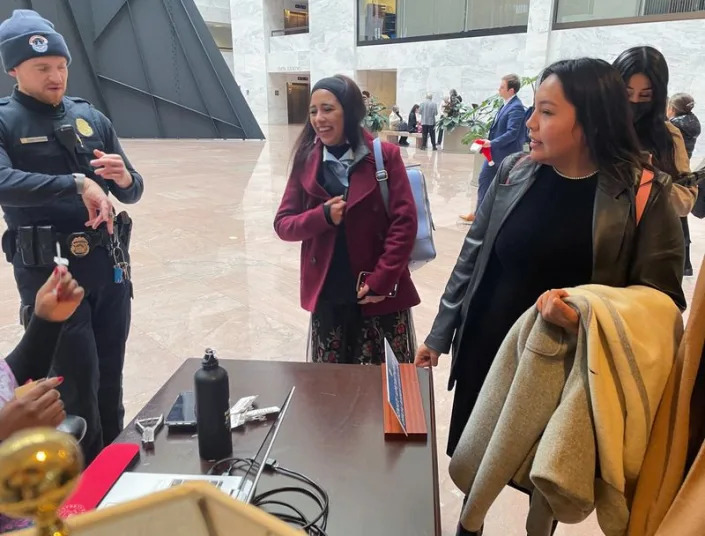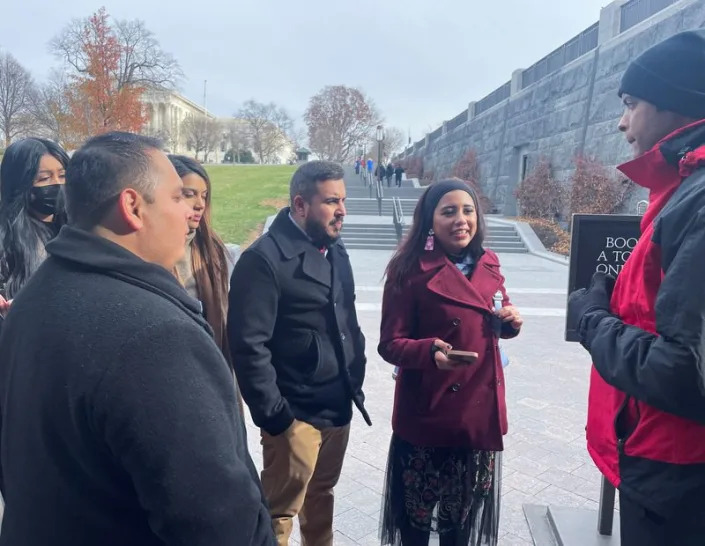
Two of the offshore wind turbines, which have been constructed off the coast of Virginia Beach, Va., are seen, June 29, 2020. Virginia regulators granted a critical approval Thursday, Dec. 15, 2022, for Dominion Energy's plans to construct and operate a 176-turbine wind farm in the Atlantic Ocean.
SARAH RANKIN
Thu, December 15, 2022 at 1:50 PM MST·4 min read
RICHMOND, Va. (AP) — Virginia regulators granted a critical approval Thursday for Dominion Energy's plans to construct and operate a 176-turbine wind farm in the Atlantic Ocean.
The State Corporation Commission effectively signed off on an agreement Dominion reached this fall with the Virginia attorney general and other parties, in which the company agreed to implement several consumer protections in connection with the Coastal Virginia Offshore Wind project.
“We thank the Commission for its approval and appreciate the collaboration of the parties involved to reach an agreement that advances offshore wind and the clean energy transition in Virginia," the Richmond-based company said in a statement. “Coastal Virginia Offshore Wind has many benefits for our customers. It is fuel free, emissions free, diversifies our energy mix and is a transformative economic development opportunity for Hampton Roads and Virginia.”
In its order, the commission also issued a warning about the impact the project will have on the electricity bills of Dominion's captive electric utility customers.
“The magnitude of this project is so great that it will likely be the costliest project being undertaken by any regulated utility in the United States. And the electricity produced by this Project will be among the most expensive sources of power — on both a per kilowatt of firm capacity and a per megawatt-hour basis — in the entire United States,” the order said.
Dominion filed its application to build and recover the costs of the project with the State Corporation Commission last year. That kicked off a lengthy process before the regulatory agency, one that has included voluminous filings and an evidentiary hearing in May.
The commission initially signed off on the project in August, but it included a consumer protection provision — a performance guarantee — that Dominion strenuously objected to, saying it would kill the project.
Several parties to the SCC proceeding, including Walmart, the AG's office and conservation groups, began to hash out a compromise, announcing a proposed agreement in late October that did away with the performance guarantee but does include performance reporting requirements and provisions laying out a degree of construction cost sharing.
The agreement now approved by the SCC calls for a cost-sharing arrangement for any overruns beyond the estimated $9.8 billion price tag. The company would cover 50% of construction costs between the range of $10.3-$11.3 billion and 100% of costs between $11.3-$13.7 billion. If construction costs were to exceed $13.7 billion, the issue would go back to the commission.
The proposal would not require the company to guarantee certain energy production levels, like the SCC had initially ordered. Rather, Dominion will have to report average net capacity factors annually and “provide a detailed explanation of the factors contributing to any deficiency.” Capacity factor is a measure of how often a generating facility runs during a period of time.
The commission will also have the continuing authority to inspect Dominion's expenditures on the project to ensure they are reasonable and prudent under state law.
The project, which will be located about 27 miles off the coast of Virginia Beach, has drawn broad support from local officials, policymakers, business groups and trade unions, who say it will help fight climate change and create jobs.
The company already has a two-turbine pilot project up and running. The 2.6-gigawatt, utility-scale project’s schedule calls for an in-service date of late 2026 or early 2027. Dominion expects the project to generate enough clean energy to power up to 660,000 homes.
Thursday's SCC order noted that while Dominion estimates the capital cost of the project to be nearly $10 billion, total project costs, including financing, are estimated to be approximately $21.5 billion.
Clean Virginia, a clean energy and rate-reform advocacy group, said in a statement that the approved compromise would help hold Dominion accountable.
“With its final ruling today, the State Corporation Commission demonstrated that consumer protection must go hand in hand with Virginia’s clean energy transition,” Clean Virginia Energy Policy Manager Laura Gonzalez said. “Absent the Commission’s leadership and pressure from environmental groups, the Attorney General, and Walmart, Dominion Energy would have zero incentive to actually produce clean energy from its offshore wind project or keep costs reasonable.”

























